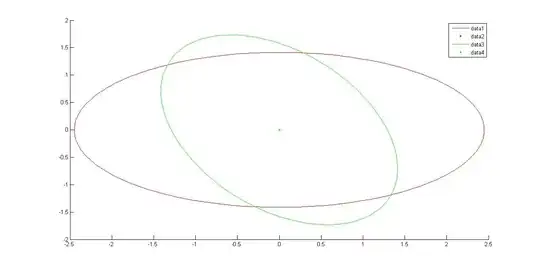If A, B, C and D are four variables, the correlation matrix will be 4x4 matrix with elements,
$$ \left[ \begin{matrix} 1 & Corr(A,B) & Corr(A,C) & Corr(A,D) \\ Corr(B,A) & 1 & Corr(B,C) & Corr(B,D) \\ Corr(C,A) & Corr(C,B) & 1 & Corr(C,D) \\ Corr(D,A) & Corr(D,B) & Corr(D,C) & 1 \end{matrix}\right] $$
I have several questions: 1) What is the maximum possible value for the correlation terms in the matrix. I mean in 2D the maximum value of correlation is 1 but is it true in 4D or in general in nD?(Since the variables are dependent on each other, I assume this correlation will have to obey some relation).
2) In 3D if I know the $Corr(A,B)$ and $Corr(B,C)$, I can calculate the $Corr(A,C)$ using $$a \ge bc-(1-b^2)^1/2(1-c^2)^1/2$$ But in 4x4 matrix case if I have $Corr(A,B)=0.5774$ and $Corr(C,D)=-0.378$, is it possible to find the maximum value or bound of the remaining correlation terms?
Please Help
Update Thank you all for your answers. Actually I know that in 3D if r1 = r2 = r3 = r then it will be in the range $[-1/2,1]$, but if I have 4 random measurements, then what will be its range under equality. Furthermore, if I have given bound for the correlation of two variables, can I get tight bound for the other variables?
Suppose I have $A = [6$ $ 0;0$ $ 2]$ and $B = [2$ $ -1;-1$ $ 3]$ plotted as: Now, if the within-set A and B covariance (correlation) is constant, what is the maximum bound of the between-set (covariance) correlation(if A & B is constant what is the bound of X in $[A$ $ X;X $ $B]$)? I hope, this will clear the question now!
Now, if the within-set A and B covariance (correlation) is constant, what is the maximum bound of the between-set (covariance) correlation(if A & B is constant what is the bound of X in $[A$ $ X;X $ $B]$)? I hope, this will clear the question now!